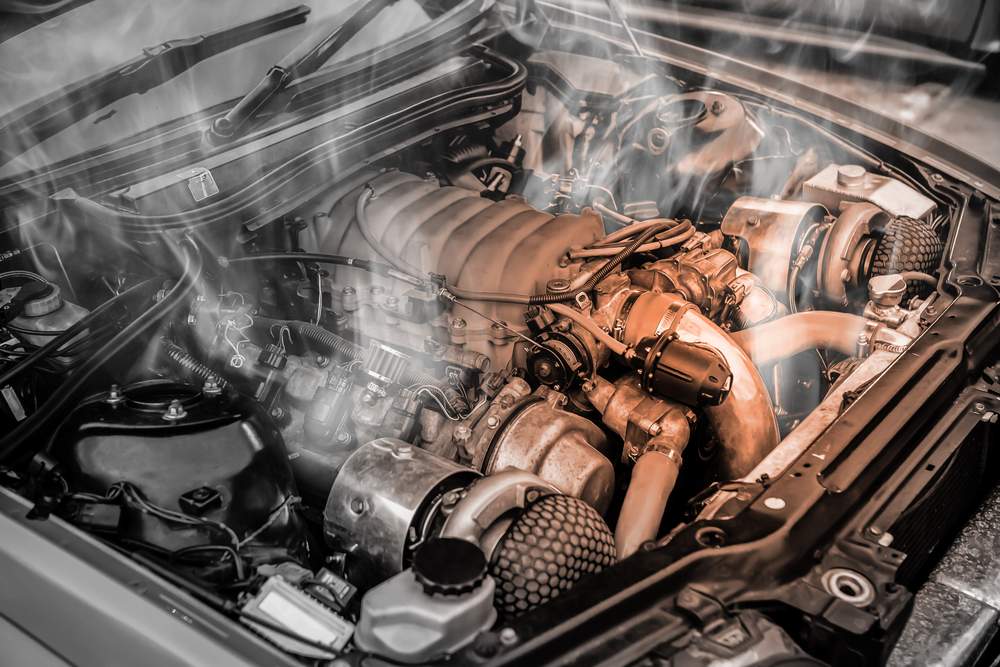Why Does My ATV Overheat: Symptoms, Causes, and Solutions


A day out with your ATV is a ton of fun until the engine overheats. Knowing the common ATV overheating symptoms is the first step in dealing with this issue, and ideally, finding a fix. Being aware of ATV overheating symptoms is also critical in ensuring that you stop riding right away to avoid major engine damage.
The clearest indicator of an ATV overheating is a warning light (if you have an instrument cluster with an overheat warning). Of course, not all ATV overheating symptoms are this clear to understand. You may notice power loss, or fluids, such as oil, dripping or leaking. You might feel the engine heating up, with a case that is hotter than usual. Pay attention to a sweet scent, which is the coolant burning, and look out for steam. You might also notice a ticking noise in the engine if you listen closely enough. That is oil burning off as the engine heats.
The first sign will likely be that burning coolant smell. Around this time, steam may be coming from the radiator. If you notice this or any other ATV overheating symptom, try to stop safely, especially if you’re at the point of a ticking engine. If you ride longer, the piston will expand and seize.
An ATV might overheat and display the symptoms above for many reasons. First, check the radiator. ATVs often tackle a lot of dirt and mud, which might wash off the exterior of your machine while still clogging the rad. Cleaning the radiator removes dirt and clogs and ensures fluids remain cool.
You should check the coolant or radiator fluid while you are there. A simple coolant tester goes a long way. It may be the wrong type or mix, too old, or too low. Other parts of the radiator to check include the fan, to make sure it’s running, and the hose. Also check the cap to ensure that it and the gasket are creating a strong seal. If the thermostat in the cooling system is faulty, your engine can overheat too.
Monitor the ATV’s water pump or impeller. These often leak or ultimately fail thanks to bearing issues. You should also consider your ATV engine tuning, ensuring it is done properly to avoid excess heat.
Is your ATV air-cooled? If so, moving air is an important element that does not work well during prolonged idling. If you are riding an air-cooled ATV, be sure to shut the machine down if you are stopping for a longer period.
Finally, no matter what type of ATV you drive, hot weather could be the problem. Your ATV may have a hard time operating well in the heat, especially with a heavy load. Even if there is nothing wrong with the machine, hot climates can overwhelm the cooling system, so you may want to sit out the ride.
As with many ATV issues, a bit of work in the present can prevent issues later on. One key aspect of avoiding ATV overheating is making sure the radiator is always as clean as possible. Remove the detachable screen and wash it with a hose or pressure washer. Then use a hose to clean the radiator fins. Be careful here, as the fins have to stay in the same shape to work well and cool the machine.
Similarly, regularly maintain the coolant as part of your schedule. Use that handy coolant tester. Your ATV manufacturer should provide recommendations on how often to flush and change the coolant. Between those complete changes, check and test the fluid at least every few months.
You can add a few aftermarket items to improve your ATV’s cooling abilities, such as an electric radiator fan. An aftermarket water pump and impeller can improve capacity. A high-pressure radiator cap can help keep your engine cool even if you’re low on coolant.
For issues like that of a faulty thermostat, you can try tests at home. Hang it in a pan of heating water and watch to ensure the thermostat opens fully at 10 to 15 degrees above its rated temperature.
As with most ATV issues and their fixes, if you find the DIY approach is not solving your overheating problem, it’s time to talk to a pro. An experienced ATV mechanic can help you determine why your machine is overheating and how you can prevent that problem going forward. A seized piston means your ATV is broken far beyond any kind of DIY fix, so attempt to deal with it long before you get to that point.
Disclaimer: While we endeavor to keep the information on our blog up to date and correct, Maxtrade (Coolster) makes no representations or warranties of any kind, express or implied about the completeness, accuracy, reliability, suitability, or availability with respect to the website or the information, products, services, or related graphics contained on the website for any purpose. Any reliance you place on such material is therefore strictly at your own risk.
Register